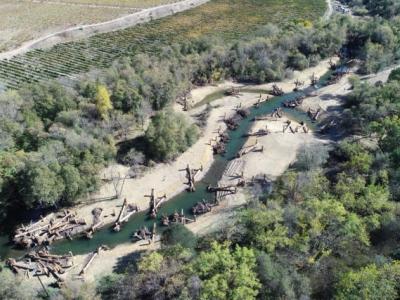The Freshwater-Estuarine Transition Zone Part 1: Salmon Life Histories and Habitat Use
Session Coordinators:
Jay Stallman and Abel Brumo, Stillwater Sciences
This session will focus on the freshwater-estuarine transition zone in coastal watersheds on the North American Pacific margin. The session will feature a diverse range of topics, including (1) hydrogeomorphic processes that create and maintain salmon habitat in riverine, floodplain, and estuarine habitats spanning the coastal plain; (2) salmon life histories and habitat use in these reaches; and (3) exemplary habitat restoration planning, implementation, and monitoring work that draws on or has contributed significantly to an understanding of physical and ecological processes in this transition zone.
Critical Connections: Freshwater-Estuary Habitat for Salmon and Marine Fishes
Rebecca Flitcroft, USDA Forest Service, PNW Research Station
Juvenile Coho Salmon Life History Variants in Humboldt Bay Tributaries
Grace Ghrist and Maddie Halloran, Humboldt State University
A Novel Approach to Estimate Winter Movement and Survival of Juvenile Coho Salmon
Nicholas Van Vleet, Humboldt State University
Barred from the Ocean: Consequences of a Unique Estuary Phenomenon on Juvenile Growth and Population Recruitment of Chinook Salmon in Redwood Creek
Emily Chen, Humboldt State University and U.S. Geological Survey California Cooperative Fish and Wildlife Research Unit
Influence of Environmental Variability on Juvenile Steelhead Abundance, Growth, and Movement in a Seasonally Closed California Estuary
Rosealea Bond, University of California Santa Cruz and NMFS Southwest Fisheries Science Center
Prioritizing Actions to Accommodate Multiple Salmonid Rearing Strategies in Lower Elk River, Humboldt Bay, CA
Darren Mierau, CalTrout


